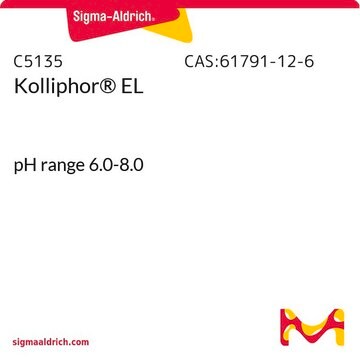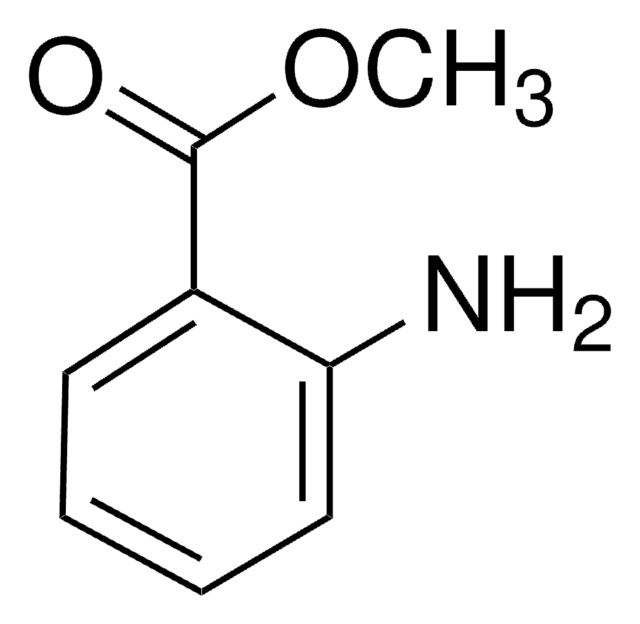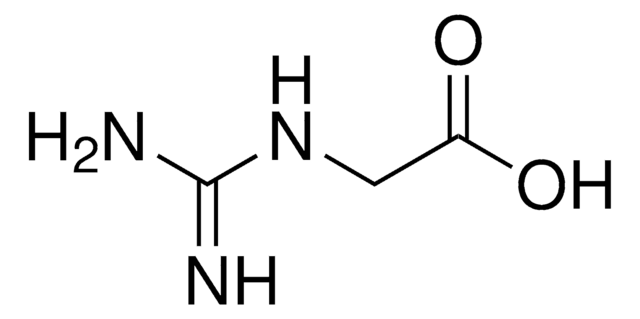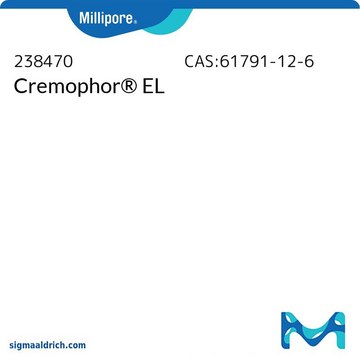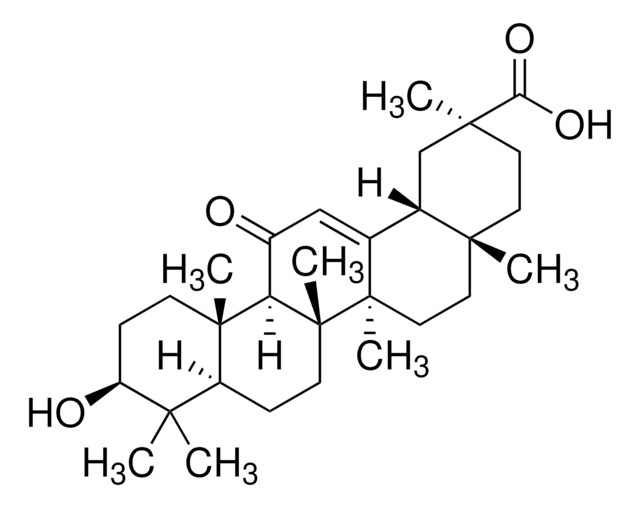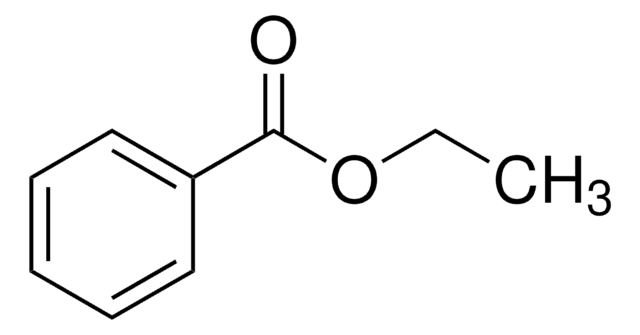A8486
N-(p-Amylcinnamoyl)anthranilic acid
≥98% (HPLC)
Sinônimo(s):
2-[[1-oxo-3-(4-Pentylphenyl)-2-propen-1-yl]amino]-benzoic acid, ACA, N-(4-Pentylcinnamoyl)anthranilic acid
About This Item
Produtos recomendados
Ensaio
≥98% (HPLC)
forma
powder
cor
white to off-white
solubilidade
DMSO: ≥20 mg/mL
temperatura de armazenamento
room temp
cadeia de caracteres SMILES
CCCCCc1ccc(\C=C\C(=O)Nc2ccccc2C(O)=O)cc1
InChI
1S/C21H23NO3/c1-2-3-4-7-16-10-12-17(13-11-16)14-15-20(23)22-19-9-6-5-8-18(19)21(24)25/h5-6,8-15H,2-4,7H2,1H3,(H,22,23)(H,24,25)/b15-14+
chave InChI
GAMRBCZMOOMBSQ-CCEZHUSRSA-N
Descrição geral
Aplicação
Ações bioquímicas/fisiológicas
Características e benefícios
Palavra indicadora
Warning
Frases de perigo
Declarações de precaução
Classificações de perigo
Aquatic Acute 1 - Aquatic Chronic 1
Código de classe de armazenamento
11 - Combustible Solids
Classe de risco de água (WGK)
WGK 3
Ponto de fulgor (°F)
Not applicable
Ponto de fulgor (°C)
Not applicable
Certificados de análise (COA)
Busque Certificados de análise (COA) digitando o Número do Lote do produto. Os números de lote e remessa podem ser encontrados no rótulo de um produto após a palavra “Lot” ou “Batch”.
Já possui este produto?
Encontre a documentação dos produtos que você adquiriu recentemente na biblioteca de documentos.
Artigos
Phospholipase A2 (PLA2) designates a class of enzymes that hydrolyze the sn-2 ester of glycerophospholipids to produce a fatty acid and a lysophospholipid. It has become clear that some of these enzymes liberate arachidonic acid in mammalian cells for the biosynthesis of eicosanoids, and thus there has been considerable interest in developing PLA2 inhibitors. Based on amino acid sequences, there are now more than 12 distinct groups of mammalian PLA2s, as well as many non-mammalian forms, all of which have been classified into 14 distinct groups with many subgroups.
We offer many products related to transient receptor potential channels for your research needs.
Nossa equipe de cientistas tem experiência em todas as áreas de pesquisa, incluindo Life Sciences, ciência de materiais, síntese química, cromatografia, química analítica e muitas outras.
Entre em contato com a assistência técnica


